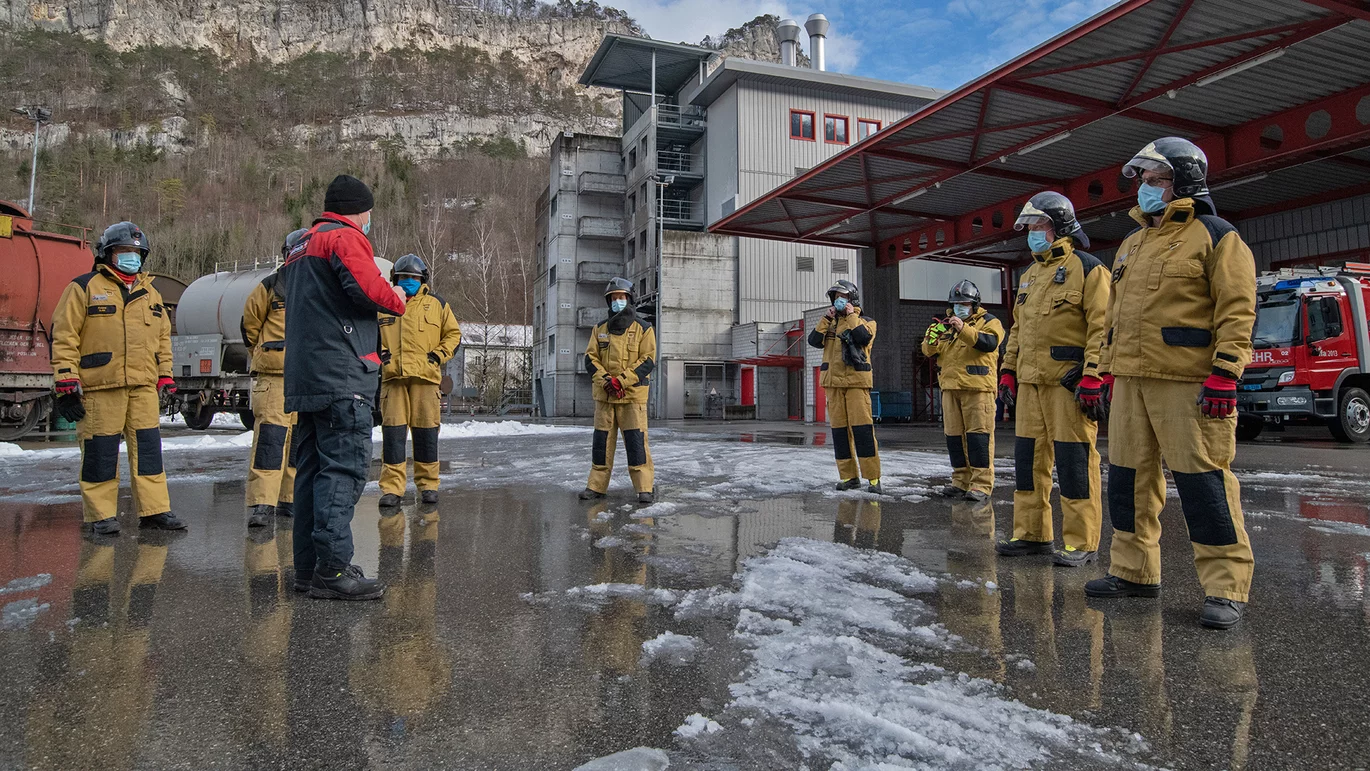No PowerPoint slides, no long lecture. Instead, practical exercises in feedback communication right from the start. Marianne Wernli surprised even the experienced instructors at the International Fire Academy with her 90-minute training session. It started with the description of a traffic accident.
90 seconds of unstructured details
Marianne Wernli, head of training at the International Fire Academy, describes an accident at a main road junction. She speaks in complete, mostly short sentences and finishes her descriptions after 90 seconds. Now her listeners are to describe the course of the accident themselves, in such a way that Marianne Wernli can note it down. This is where the difficulties begin: Is the red VW involved in the accident the red car that was mentioned at the very beginning? Is the yellow Nissan the pick-up Nissan whose driver was careless? How many vehicles were involved and who was going in which direction? Marianne Wernli has repeatedly described the vehicles and people differently in her story, causing confusion. In the end, it is clear to everyone: In 90 seconds, you can name a lot of details, of which the audience can only remember a part. If there is no clear structure, it becomes impossible to reproduce what has been said correctly or even to implement it in any way.
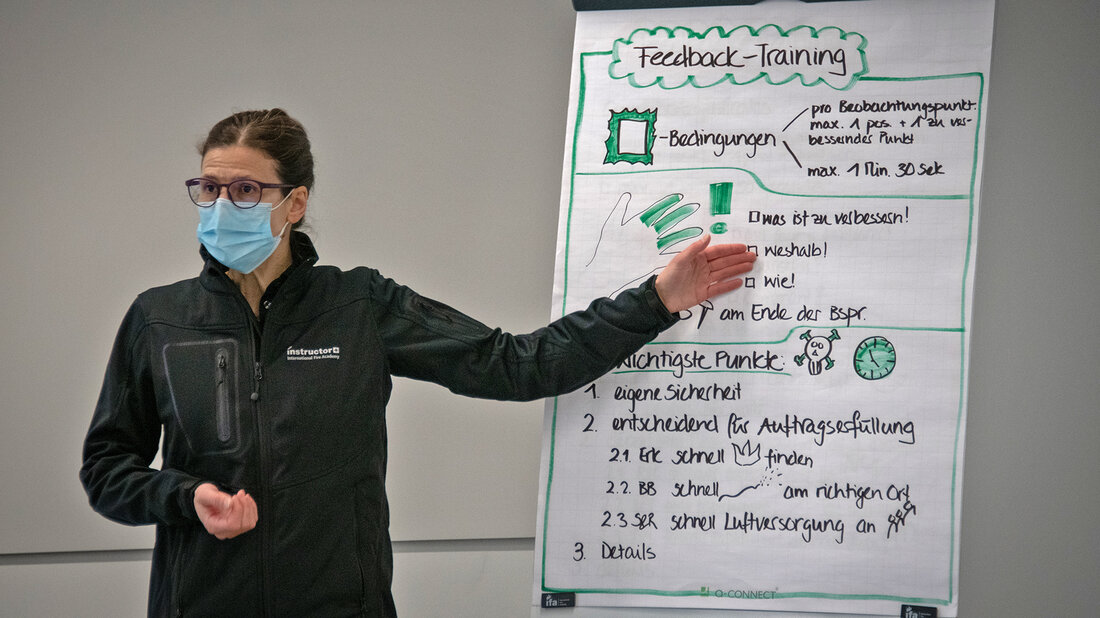
A day of shooting for a deliberately flawed illustrative video
In preparation for this year's instructor training, the team of full-time instructors filmed in the road training tunnel numerous sequences of firefighting, reconnaissance and search & rescue. Many errors were intentionally made. Accordingly, the produced illustrative video shows in a relatively short sequence, already ten or more issues, which could be improved.
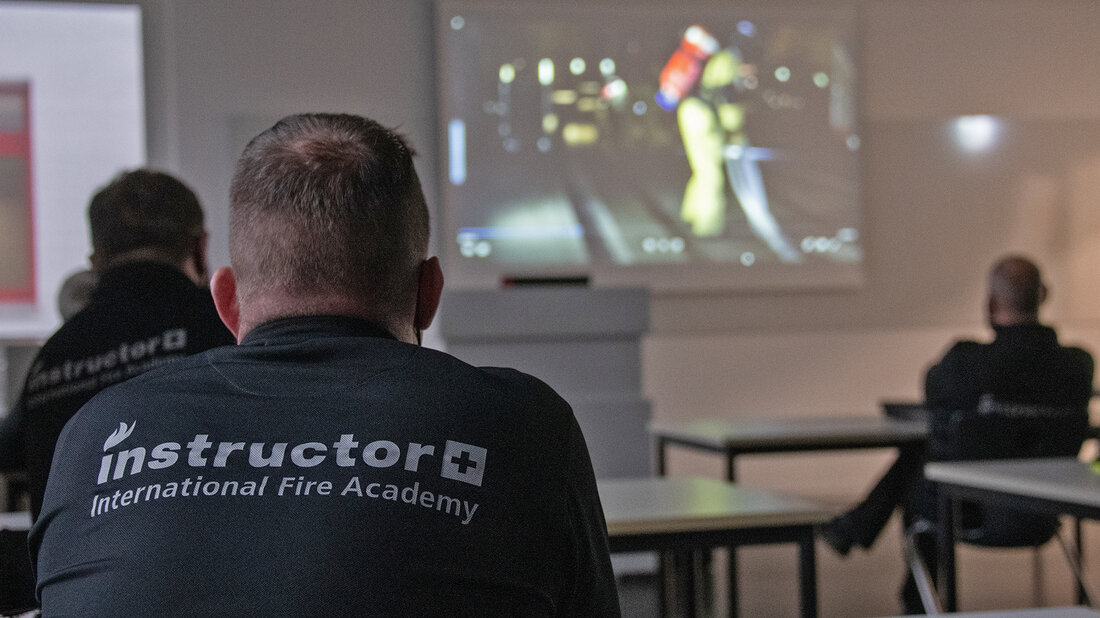
Three remark points for constructive feedback
The instructors are given the task of giving feedback on a shown sequence of the illustrative video. Timing: 90 seconds. The large number of errors makes it difficult for the instructors to select the feedback points spontaneously, and positive aspects are initially neglected. Therefore, Marianne Wernli then asks her instructors to list everything that could be improved, but also everything that went well. She explains: «In order to motivate, it is important not only to criticize but to build on positive things.»
Marianne Wernli provides the instructors at the International Fire Academy with the following feedback scheme:
- A maximum of three points is taken up in the feedback.
- For each topic, a positive aspect is first mentioned.
- Then comes an aspect that should be improved; it has to be explained why it makes sense and how the improvement can actually be implemented.
However, that does not answer one question: Which feedback topics should the instructors choose if a lot has gone wrong?
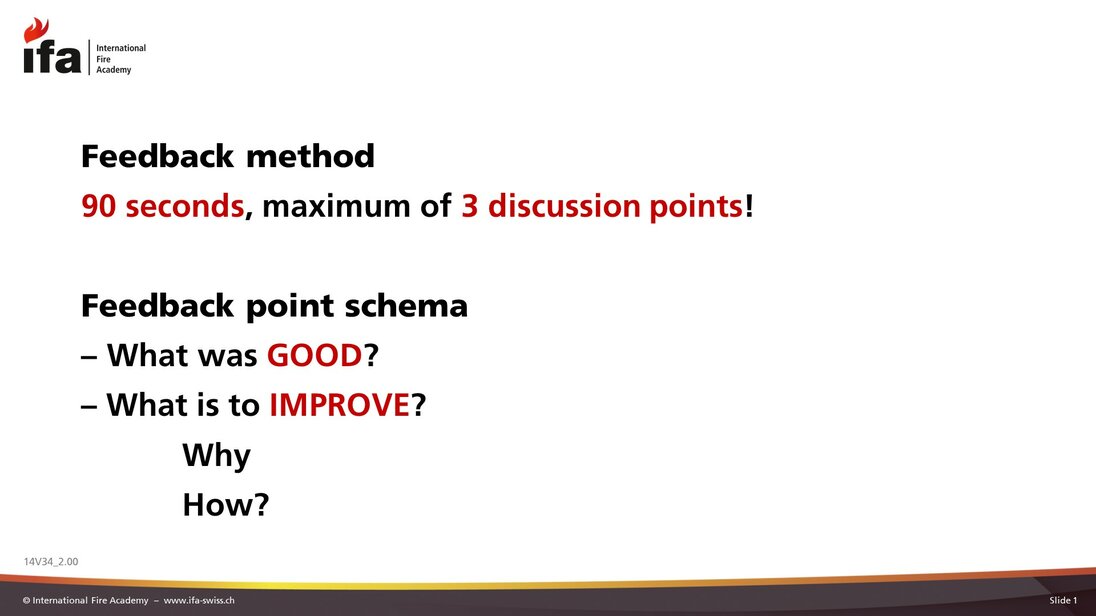
The first priority is one's own safety
Marianne Wernli no longer has to teach her instructors what is most important. It is clear to everyone: The safety of the emergency personnel comes first.
For the instructors, Marianne Wernli lists the three relevant categories for assessing the potential for improvement:
- personal safety,
- the actual fulfilment of the order, in particular proposals to speed up the processes,
- other details.
Only when less than three relevant safety aspects are to be criticized is the order fulfilment addressed. Furthermore, only when all safety rules are adhered to and the fast and targeted fulfilment of orders hardly offers any potential for improvement, is attention drawn to other details in the feedback.
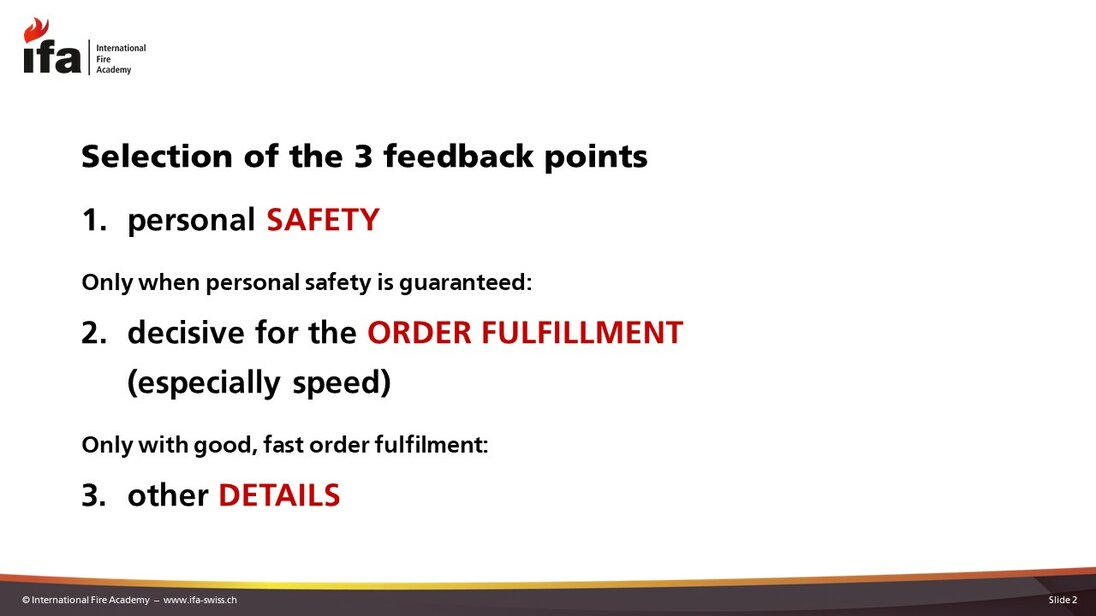
Continuous improvement from drill to drill
«It is a mistake to believe that the greatest learning success can be achieved if as many feedback points as possible to be improved are addressed,» explains Marianne Wernli. Hardly anyone can remember more than three points. «If too much is addressed, as with the unstructured accident description, there is a risk that the connection will be lost and, in the case of an unfavourable case, nothing will be better at the next drill.» On the other hand, it has proven successful to always focus on the three most important points and thus support a continuous improvement from drill to drill.
Open to individual differences
The International Fire Academy's feedback method does not depend on whether participants follow a predefined action schedule or meet certain expectations. It is crucial that their own safety is maintained and that they complete the order assigned to them quickly and efficiently. This means that training is open to individual differences in the approach of fire services and focuses on the key aspects of an operation.


